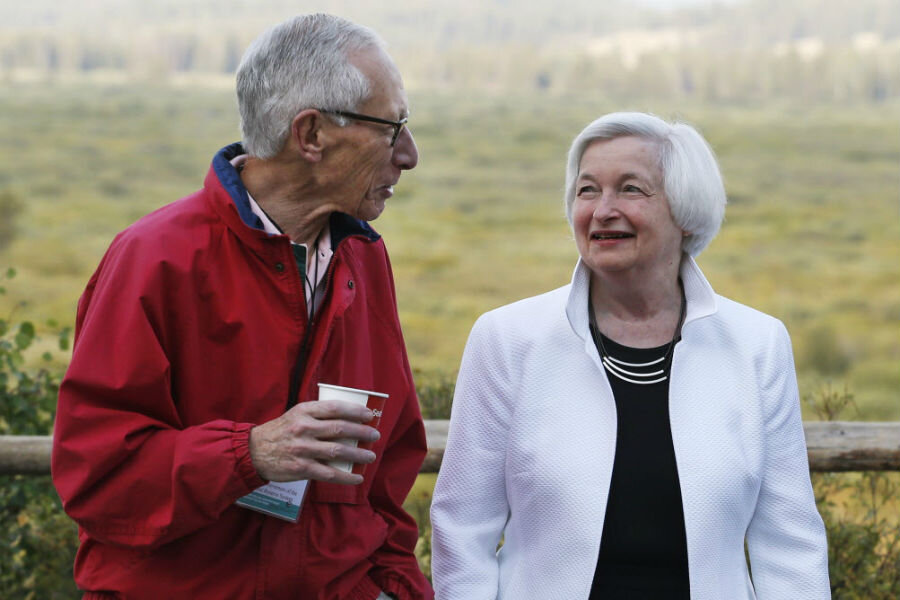US cost of living is creeping up. Could that be a good thing?
Most people don't think of inflation as a positive. And with prices for consumer goods – including shelter, medical care, and clothing – going up, it’s easy to understand why.
Core prices – the prices for all consumer items apart from food and energy, where price swings can be frequent and dramatic – went up 0.2 percent in August, according to the Bureau of Labor Statistics. That's the largest month-over-month increase since February, and outpaces economists' predictions. Some Americans may already be feeling the pinch after higher prices collided with lower wages last month.
But the Federal Reserve says there are significant, if not immediately apparent, benefits to these price increases. To a degree, higher prices are a sign that the economy is moving in the right direction. In fact, the Fed has set a goal of 2 percent inflation annually, which the US has yet to meet. Inflation was 1.1 percent over the past 12 months (before seasonal adjustment).
Other central banks, including the Bank of England, are taking a similar approach. Economists say 2 percent inflation will create flexibility in prices, which helps insulate the economy from potential shocks.
"Since some prices/wages inevitably rise at a slower rate than others…, the idea is that a small positive inflation rate would reduce the number of individual prices/wages that would end up falling," Steven Russell, professor of economics at Indiana University-Purdue University Indiana, tells The Christian Science Monitor in an email.
Professor Russell writes that the Fed would not want to see inflation higher than 2 percent "on any persistent basis." If prices get too high, consumers can't afford goods. But a small rise in prices as a result of inflation protects businesses from losing money as they produce goods, which in turn helps people keep their jobs.
The 2 percent goal is valuable for another reason: It creates expectations for individuals and companies. If people know that inflation is coming, they can adjust their behavior to prepare for it. Federal Reserve Chair Janet Yellen has been reinforcing the expectation of inflation in her speeches.
"Inflation has run persistently below the Fed's goal of 2 percent over the past several years.... Over the 12 months through April, the price index for personal consumption expenditures rose only about 1 percent," she told the World Affairs Council this June. "But I remain optimistic, because two factors that have been holding down inflation will likely prove only temporary."
Dr. Yellen cited the drop in oil prices and the strong dollar as short-term limits on inflation.
Since the recession, the Federal Reserve has been trying to get people to spend their money in order to stimulate the economy. If people expect inflation to drive prices up by next year – or even next month – they should be more likely to buy new goods now. Whether Americans choose to buy clothes, restaurant meals, or cars, increased spending helps drive the economy and keep more people in work.
It also makes it easier for individuals and businesses to pay off their debts, because, with inflation, fixed-rate loans are worth less in real terms.
Of course, not everyone agrees with the Federal Reserve's plan. Some environmentalists advocate for a "no-growth" economy and take issue with the Fed's consumption-driven economics. Other economists believe that the focus on consumer spending sidelines the value of saving. Banks direct these savings, they say, toward capital investments that "enhance productivity and drive economic growth."








